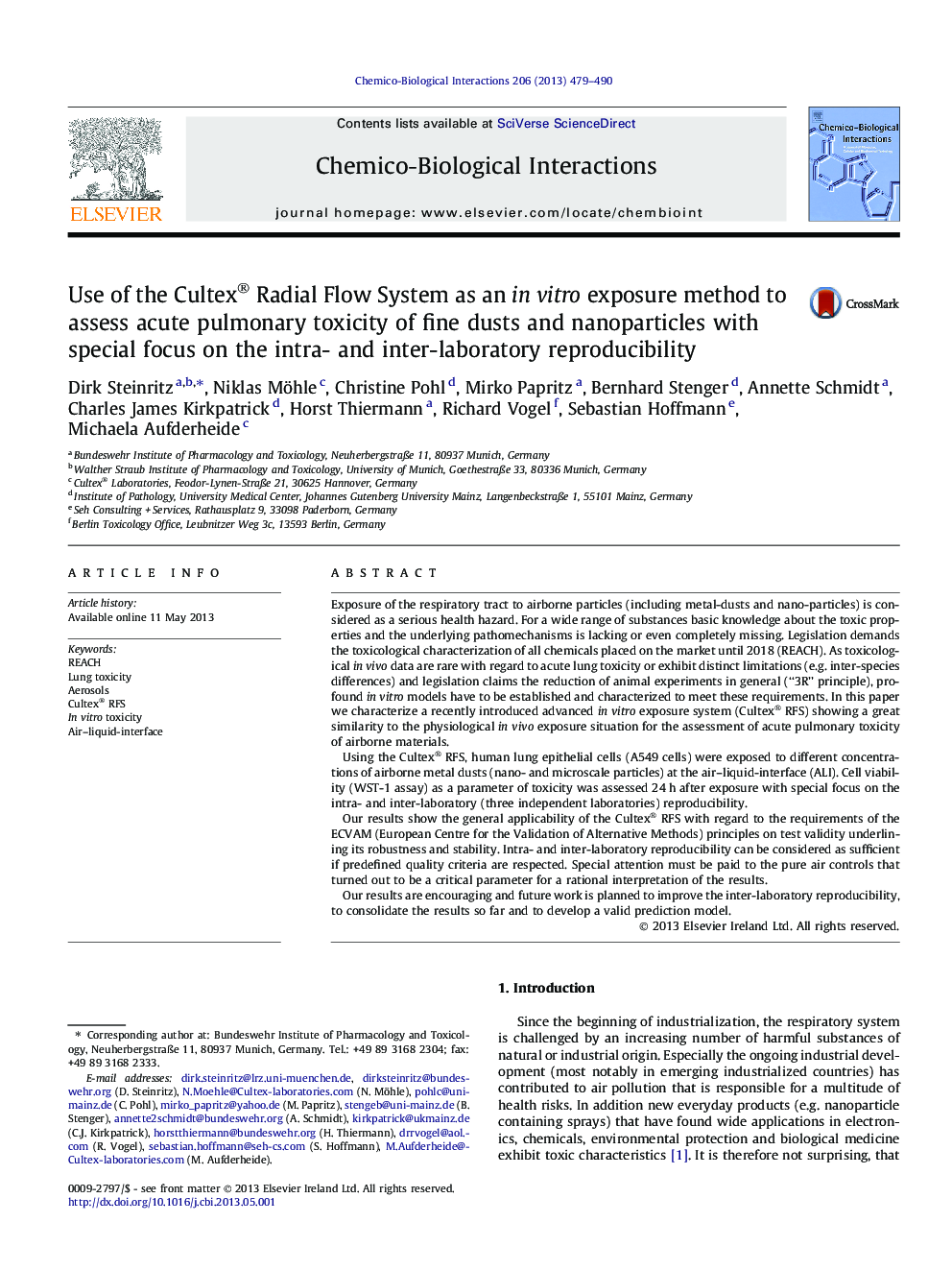| کد مقاله | کد نشریه | سال انتشار | مقاله انگلیسی | نسخه تمام متن |
|---|---|---|---|---|
| 2580568 | 1130138 | 2013 | 12 صفحه PDF | دانلود رایگان |

• We characterized the Cultex® RFS for assessment of in vitro pulmonary toxicity.
• A549 cells were exposed to different airborne particles at the air–liquid-interface.
• Cell vitality as a parameter of toxicity was assessed 24 h after exposure.
• Special focus was laid on the intra- and inter-laboratory reproducibility.
• Reproducibility was high under consideration of defined quality criteria.
Exposure of the respiratory tract to airborne particles (including metal-dusts and nano-particles) is considered as a serious health hazard. For a wide range of substances basic knowledge about the toxic properties and the underlying pathomechanisms is lacking or even completely missing. Legislation demands the toxicological characterization of all chemicals placed on the market until 2018 (REACH). As toxicological in vivo data are rare with regard to acute lung toxicity or exhibit distinct limitations (e.g. inter-species differences) and legislation claims the reduction of animal experiments in general (“3R” principle), profound in vitro models have to be established and characterized to meet these requirements. In this paper we characterize a recently introduced advanced in vitro exposure system (Cultex® RFS) showing a great similarity to the physiological in vivo exposure situation for the assessment of acute pulmonary toxicity of airborne materials.Using the Cultex® RFS, human lung epithelial cells (A549 cells) were exposed to different concentrations of airborne metal dusts (nano- and microscale particles) at the air–liquid-interface (ALI). Cell viability (WST-1 assay) as a parameter of toxicity was assessed 24 h after exposure with special focus on the intra- and inter-laboratory (three independent laboratories) reproducibility.Our results show the general applicability of the Cultex® RFS with regard to the requirements of the ECVAM (European Centre for the Validation of Alternative Methods) principles on test validity underlining its robustness and stability. Intra- and inter-laboratory reproducibility can be considered as sufficient if predefined quality criteria are respected. Special attention must be paid to the pure air controls that turned out to be a critical parameter for a rational interpretation of the results.Our results are encouraging and future work is planned to improve the inter-laboratory reproducibility, to consolidate the results so far and to develop a valid prediction model.
Journal: Chemico-Biological Interactions - Volume 206, Issue 3, 5 December 2013, Pages 479–490